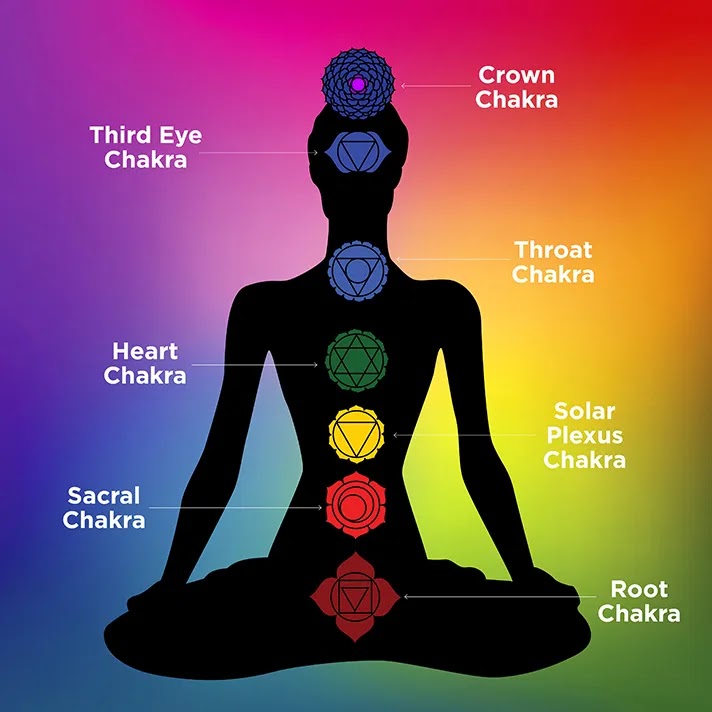Understanding the 7 Chakras: Their Significance and Functions
The concept of chakras plays a central role in various Eastern philosophies and metaphysical systems, particularly within Hinduism and Buddhism. Rooted in ancient texts and practices, chakras are considered as energy centers within the human body, each corresponding to specific physical, emotional, and spiritual states. This comprehensive guide delves into the seven primary chakras, exploring their significance, functions, and the ways in which they influence our well-being.
The term "chakra" is derived from the Sanskrit word for "wheel" or "disk," signifying the notion of spinning energy vortexes that exist within the subtle body, intersecting with the physical one. These energy centers are thought to be aligned along the spine, from the base to the crown of the head, each governing different aspects of our physical, emotional, and spiritual health.
1. Root Chakra (Muladhara)
Located at the base of the spine, the Root Chakra is associated with the color red and represents our foundation and feeling of being grounded. It's linked to our basic needs for survival, security, and stability. When balanced, the Root Chakra fosters feelings of security, stability, and a sense of belonging. Conversely, when it's unbalanced, one may experience anxiety, fear, and disorders related to the lower part of the body, such as the legs, feet, and lower back.
2. Sacral Chakra (Svadhishthana)
The Sacral Chakra, symbolized by the color orange, resides just below the navel. It's the center of our feelings, creativity, and sexual energy. This chakra governs our ability to connect with others, experience joy, and embrace change. A balanced Sacral Chakra promotes emotional stability, creativity, and healthy sexual desires, while imbalances may lead to emotional instability, creative blocks, and sexual dysfunction.
3. Solar Plexus Chakra (Manipura)
Represented by the color yellow, the Solar Plexus Chakra is located in the abdomen, above the navel. It's the seat of our personal power, self-esteem, and confidence. This chakra influences our ability to assert ourselves, make decisions, and control our personal and professional lives. A well-balanced Solar Plexus Chakra contributes to a strong sense of self, motivation, and purpose, whereas an imbalance can cause low self-esteem, indecisiveness, and powerlessness.
4. Heart Chakra (Anahata)
Situated in the center of the chest, the Heart Chakra is associated with the color green and represents love, compassion, and emotional well-being. It serves as the bridge between our lower, more physical chakras, and the higher, spiritual ones. A balanced Heart Chakra enables us to give and receive love freely, fostering healthy relationships and a deep sense of peace and empathy. An imbalance, however, may lead to feelings of detachment, jealousy, and heart-related issues.
5. Throat Chakra (Vishuddha)
The Throat Chakra, colored in blue, is located in the throat area. It governs our ability to communicate, express our thoughts and feelings, and speak our truth. This chakra is crucial for effective communication, creativity, and self-expression. When the Throat Chakra is balanced, one can express themselves clearly and authentically, but an imbalance may result in communication difficulties, fear of speaking, and throat ailments.
6. Third Eye Chakra (Ajna)
Represented by the color indigo, the Third Eye Chakra is positioned in the forehead, between the eyebrows. It's associated with intuition, insight, and the ability to see the bigger picture. This chakra enables us to connect with our inner wisdom and envision our lives beyond the ordinary. A balanced Third Eye Chakra allows for clear thought, spiritual insight, and intuition, while an imbalance can lead to confusion, indecision, and headaches.
7. Crown Chakra (Sahasrara)
The Crown Chakra, depicted in violet or white, is located at the top of the head. It represents our connection to spirituality, enlightenment, and the universe. This chakra is concerned with our awareness and understanding of the divine. A balanced Crown Chakra leads to a profound sense of peace, spiritual connection, and enlightenment, whereas an imbalance might manifest as a lack of purpose, cynicism, and isolation.
Maintaining the balance of the chakras is essential for our overall well-being. Various practices can help in aligning and harmonizing these energy centers, including yoga, meditation, reiki, crystal healing, and the use of essential oils. Each practice targets the chakras in different ways, helping to release blockages and promote the free flow of energy throughout the body.
The chakras are a fundamental aspect of our existence, intertwining the physical, emotional, and spiritual components of our being. Understanding and working with these energy centers can lead to profound personal growth, healing, and transformation. By nurturing and balancing our chakras, we can achieve a state of health, harmony, and vitality, paving the way for a more fulfilling and enlightened life.



















